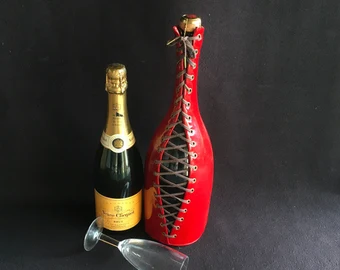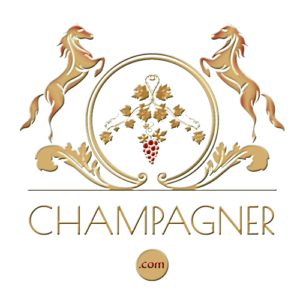Champagne art
Champagne embodies more than just the best quality among wines. In addition to the actual enjoyment, champagne also creates a powerful aura that is difficult to put into words, but is almost always tangible.
That's how you say it in English:
Champagne sets a mood, delivers a powerful statement and almost predictably enhances the experience favourably! Know that you are not only consuming the best wine, but are also summoning a great spirit!
As early as the Belle Epoque, some manufacturers recognised that this powerful phenomenon, this spirit, was best captured through art. Only the best artists and graphic designers of the era were good enough to be entrusted with embodying this 'spirit' in connection with Champagne labelsposters, menus and postcards.
For example, the Delbeck company successfully commissioned well-known artists of the period such as Klimt, Muchas, Cappiello, Ergé, Gallé, Andreis, Chatin, Tristan Bernard and Benjamin Rabier.
Both the success and the scope of the artistic achievements of this era are unrivalled. Champagne posters from the Belle Epoque are still highly sought-after as decorative posters all over the world.
However, the natural link between champagne and art remains unbroken to this day.
Champagne art
Today's champagne art of Champagne houses can be roughly divided into three areas:
- National art, i.e. art that is limited purely to France and its artists
- International art, i.e. art that puts artists around the world in the light of champagne
- Design art or New Art. This refers to an often provocative, sometimes offensive type of art. This type of champagne art includes things that no longer recognise any reference to the Belle Epoque period
An example of national champagne art are the bottles from Bruno Pillard, for which the champagne labels were designed and created by French artists.
So far, twelve bottles have been realised by artists living and working in France. The special thing about these bottles is that each artist has honoured a different variety or a different year.
The so-called Collections bottles from Taittinger are a prime example of international art in relation to champagne.
The Taittinger collection bottles are champagne bottles that have been produced since 1978 in a good champagne year.
The special thing about it is that each of these bottles was designed by a different artist. Since 1983, nine internationally renowned artists have each designed a bottle on behalf of Claude Taittinger.
The first six bottles were designed by VASARELY (Millsésime 1978), by ARMAN (Millsésime 1981), by MASSON (Millsésime 1982), by VIEIRA DA SILVA (Millsésime 1983), by LICHTENSTEIN (Millsésime 1985) and by HARTUNG (Millsésime 1986). They can only be found at auction with a lot of luck.
Fortunately, the last three bottles by the artists ImaÏ, Corneille and Matta are still available in stores.
In what we call design champagne art, a good example came from Veuve Cliquot.
For the so-called Millinnium, the turn of the year from 1999 to 2000a special version of La Grande Dame was launched by Veuve Cliquot.
To this end, artist Elisabeth Rubin designed a case made of acrylic glass that could hold either a 1.5 or a 3-litre bottle. The bottle was attached to two leather straps in this case.
Last but not least, an example that does not fit easily into one of the three categories
From the house of Piper-Heidsieck comes a bottle designed by French fashion designer Jean-Paul Gaultier.
This was a bottle clad in a red corset. The bottle and the surrounding clothing are of course signed by the creator, and the bottle comes in beautiful acrylic glass packaging.

Jean-Paul Gaultier & Piper-Heidsieck Champagne
As you can see, the subject of champagne art is very diverse and cannot be categorised in a fixed drawer.
